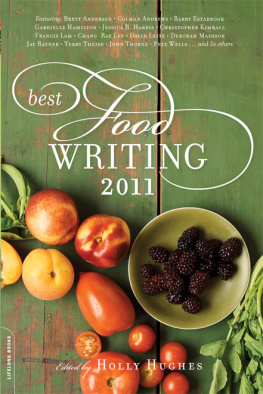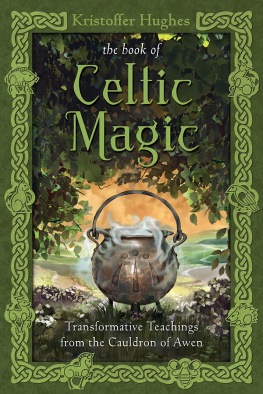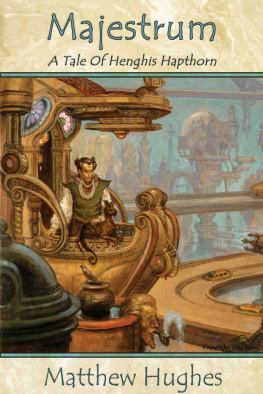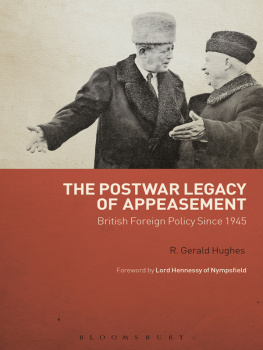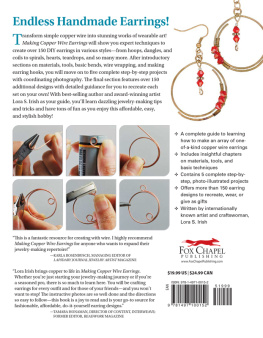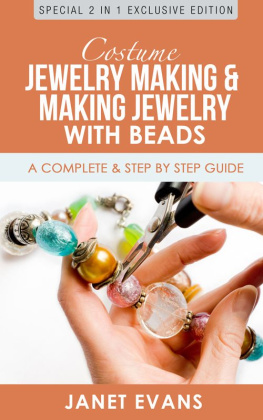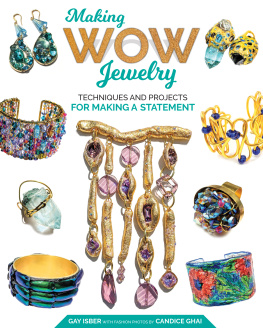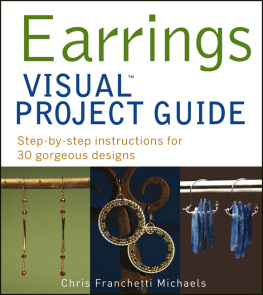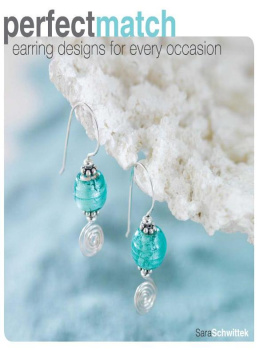Jewellery Making
33 Tips and Tricks For Making Unique Earrings
Table of Contents
Copyright Notice
Copyright 2015 by Debra Hughes - All rights reserved.
This document is geared towards providing exact and reliable information in regards to the topic and issue covered. The publication is sold with the idea that the publisher is not required to render accounting, officially permitted, or otherwise, qualified services. If advice is necessary, legal or professional, a practiced individual in the profession should be ordered.
- From a Declaration of Principles which was accepted and approved equally by a Committee of the American Bar Association and a Committee of Publishers and Associations.
In no way is it legal to reproduce, duplicate, or transmit any part of this document in either electronic means or in printed format. Recording of this publication is strictly prohibited and any storage of this document is not allowed unless with written permission from the publisher. All rights reserved.
The information provided herein is stated to be truthful and consistent, in that any liability, in terms of inattention or otherwise, by any usage or abuse of any policies, processes, or directions contained within is the solitary and utter responsibility of the recipient reader. Under no circumstances will any legal responsibility or blame be held against the publisher for any reparation, damages, or monetary loss due to the information herein, either directly or indirectly.
Respective authors own all copyrights not held by the publisher.
The information herein is offered for informational purposes solely, and is universal as so. The presentation of the information is without contract or any type of guarantee assurance.
The trademarks that are used are without any consent, and the publication of the trademark is without permission or backing by the trademark owner. All trademarks and brands within this book are for clarifying purposes only and are the owned by the owners themselves, not affiliated with this document.
Disclaimer
While all attempts have been made to verify the information provided in this book, the author does not assume any responsibility for errors, omissions, or contrary interpretations of the subject matter contained within. The information provided in this book is for educational and entertainment purposes only. The reader is responsible for his or her own actions and the author does not accept any responsibilities for any liabilities or damages, real or perceived, resulting from the use of this information.
Introduction
Becoming an earring designer is one of the most rewarding, affordable and fulfilling creative pursuits that almost anyone can do in the comfort of their own home.
Whether you are searching for a new stream of income, up-skilling, or are looking for ways to create beautiful and personalised gifts and accessories, earring design and construction can be as versatile as you are.
Brimming with 33 tips and tricks to sharpen your design skills, this handy guide will take you step-by-step through the foundations to get you on your way to building a dazzling empire.
So, read on and enjoy!
BONUS: Your FREE Gift
Thank you for purchasing my book: " Jewelry Making ". I want to show you my appreciation by offering an exclusive eBook 12 Amazing DIY Gift Ideas for Any Occasion for FREE.
Simply Click the Button Below

OR Go to This Page
Chapter 1 Getting Started
So, youve taken the plunge into earring design fabulous!
While most crafters enter the industry with some inclination as to what they want to design, there are times when it is difficult to get the creative juices flowing or to figure out where to start.
Here are some handy tips on getting started on your project.
- Have the right tools
Having the right tools for the task ahead will ensure that your earrings are safe to wear, resistant to premature wear-and-tear and offer the highest finish.
Your toolbox should include:





- Scales that measure grams (optional)

Non-slippery surface to work on (e.g. silicone or linen mats)
- Know the right materials to use
Material selection is often considered far more important than the eventual design of a piece; earrings that cause irritation will not be worn again.
Metal and material sensitivities are often caused by skin reactions to non-precious elements that exist within the final product; reactions can be exacerbated by diet, hormones and skin acidity.
Due to the nature of its extraction, precious metals that are available for jewellery making are rarely ever 100 per cent pure. Batches of gold and silver are measured for their purity level and sold to suit. This does not mean that impure gold or silver is worse, in fact, they adopt characteristics that make them easier to wear and use.
Silver
Pure Silver = purity rate of 100/100, this material is very soft

Sterling Silver = purity rate of 92.5/100, this material offers strength and flexibility. Commercial products made in Sterling Silver feature the stamp 925.
Gold
Pure Gold: 24 carat, this material has a very warm yellow appearance and is so soft it can be manipulated by hand.

Gold is then made available in the following purities:
- 22 carat (22 parts gold to 2 parts other)
- 18 carat (18 parts gold to 6 parts other)
- 14 carat (14 parts gold to 10 parts other)
- 9 carat (9 parts gold to 15 parts other): the strongest and most versatile gold product available; very few people will react to this alloy
Widths to use
22 Gauge: probably the thinnest recommendation to use, this width is suitable for fine earrings, but may need to be work-hardened to make it less flimsy.
21 Gauge: the most versatile width; this will fit most, if not all piercings and offers great versatility.
20 Gauge: thicker than the 21, this offers a little more sturdiness but may not slip easily into most piercings.



